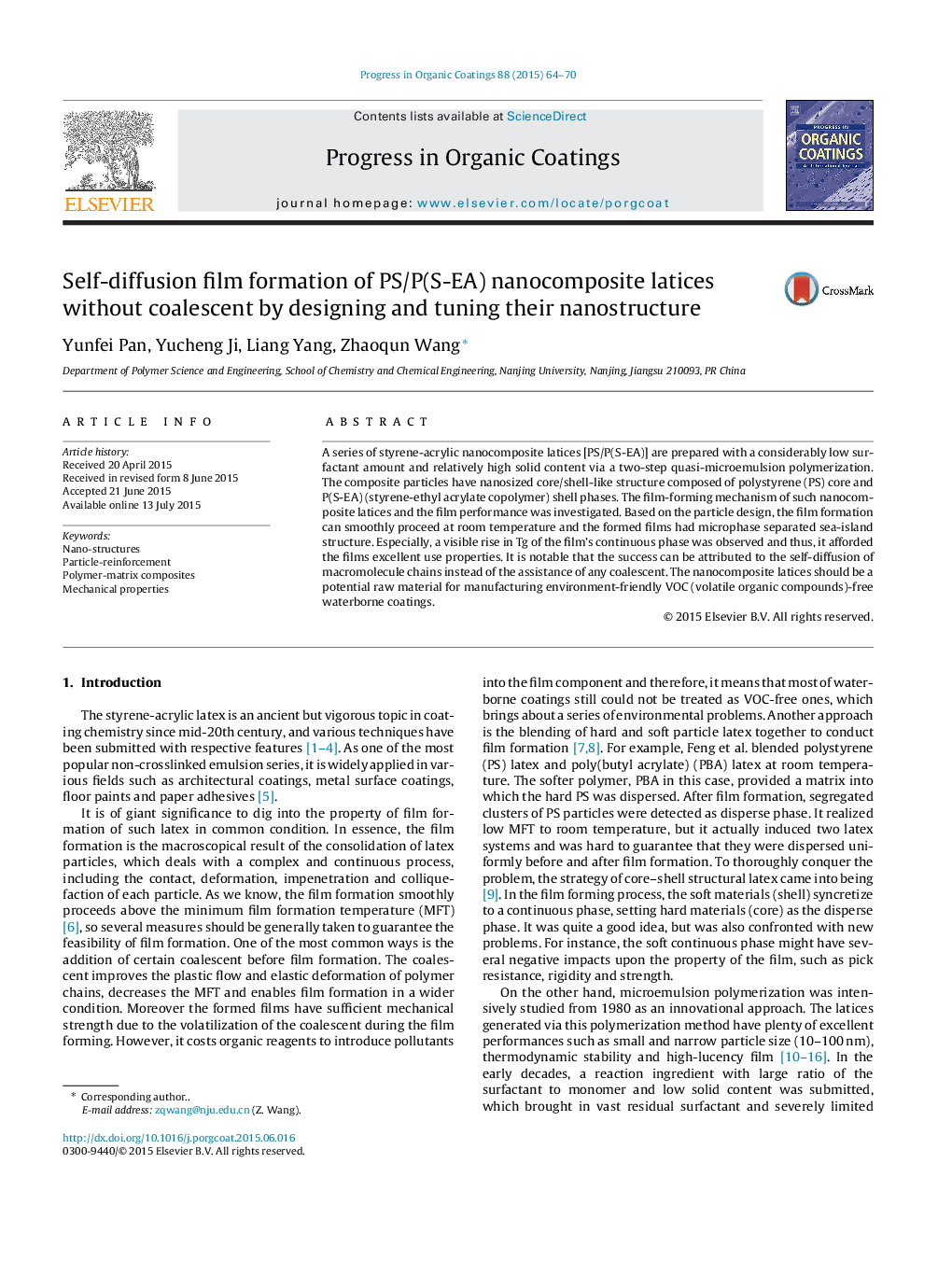| Article ID | Journal | Published Year | Pages | File Type |
|---|---|---|---|---|
| 692306 | Progress in Organic Coatings | 2015 | 7 Pages |
•Nanosized PS/P(S-EA) core/shell-like particles were prepared at low surfactant amount.•Film formation proceeded smoothly at room temperature without any coalescents.•Films had nanosized sea-island structure after self-diffusion of macromolecules.•The VOC-free films had better mechanical properties and optical transparency.
A series of styrene-acrylic nanocomposite latices [PS/P(S-EA)] are prepared with a considerably low surfactant amount and relatively high solid content via a two-step quasi-microemulsion polymerization. The composite particles have nanosized core/shell-like structure composed of polystyrene (PS) core and P(S-EA) (styrene-ethyl acrylate copolymer) shell phases. The film-forming mechanism of such nanocomposite latices and the film performance was investigated. Based on the particle design, the film formation can smoothly proceed at room temperature and the formed films had microphase separated sea-island structure. Especially, a visible rise in Tg of the film's continuous phase was observed and thus, it afforded the films excellent use properties. It is notable that the success can be attributed to the self-diffusion of macromolecule chains instead of the assistance of any coalescent. The nanocomposite latices should be a potential raw material for manufacturing environment-friendly VOC (volatile organic compounds)-free waterborne coatings.
Graphical abstractFigure optionsDownload full-size imageDownload as PowerPoint slide
